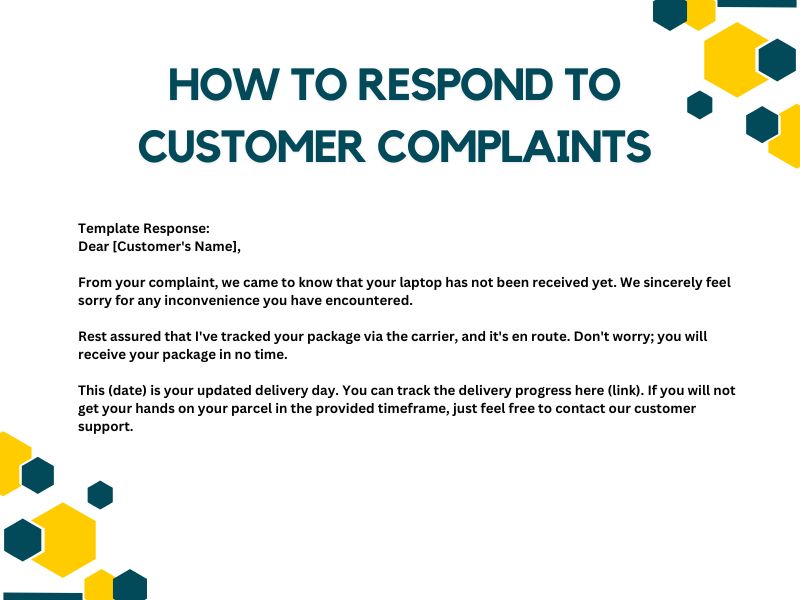How to Respond to Customer Complaints| With Examples
Are you looking for ways to improve customer relationships? In the realm of modern business, customer satisfaction stands as an indispensable cornerstone. The success of any enterprise hinges upon the gratification of its consumers. To create a strong brand identity in the market, businesses ensure proper communication with their clients. However, the pursuit of perfection is inaccessible without facing challenges. Customer complaints are inevitable throughout this journey. For handling these issues, an effective response is truly a game changer. This article offers you a strategic approach to ‘how to respond to customer complaints’ with illustrative examples.
What is Customer Complaints?
How to Respond to Customer Complaints: Customer complaints refer to the expressions of dissatisfaction that customers show to a business regarding its products, services, policies, or interactions.
What are the 4 types of Customer Complaints?
To understand how to respond to customer complaints, first get into the four main types of customer issues.
- Product/Service Quality Complaints: These issues are about the functionality or performance of your product or service. If your product is faulty or service quality misaligns with customers’ expectations, they may raise related concerns.
- Billing and Pricing Complaints: Customers raise doubts about incorrect billing, overcharges, or pricing discrepancies.
- Customer Service Complaints: These complaints focus on interactions with your customer service team. It may include misconduct, unresponsiveness, or lack of assistance.
- Delivery/Logistics Complaints: Issues related to late deliveries, deteriorated goods, or inefficient logistics fall under this category.
How to Respond to Customer Complaints?
Responding to customer complaints requires a thoughtful and strategic approach. Let’s discuss the steps how to handle customer complaints.
Listen and Understand
By responding to and resolving customer queries, brands can earn the trust of 83% of their customers right away. When a customer expresses a complaint, pay them full heed. Listen actively to their description of the problem and ask clarifying questions if needed. This manifests that you value their perspective and are committed to resolving the issue.
Apologize Sincerely
Customers appreciate organizations that take ownership of their errors and work to make things right. For that, try to initiate your response with a sincere apology. Even if the issue wasn’t directly your mistake, you should ask pardon for the inconvenience the customer has experienced. This gesture showcases your empathy and concern towards them.
Don’t Forget to Thanks the Customer
Express gratitude for the customer’s feedback. Make them feel worthy that you appreciate their willingness to bring the issue to the table. Let them know that it helps you ameliorate your products or services. Research shows that 81% of people make more purchases if customer service of the brand matches their satisfaction.
Offer a Solution
Next, offer a clear and practical solution to address the customer’s concern. Ensure that the solution meets their needs and is feasible on your end. If appropriate, provide options to choose from.
Outline Steps to Your Customers
How to Respond to Customer Complaints: To keep your customers engaged, offer a detailed explanation of how you resolve their issues. Provide them with an overview of the steps you’ll take. Also, you can inform them about an expected timeframe and how the solution benefits the customer.
Follow Up
After the complaint has been resolved, follow up with the client to ensure they are gratified with the solution. This post-resolution contact reinforces your dedication to their satisfaction.
Document the Complaint
To tackle the same complaints in the future, keep a record of the issue and its response. This documentation aids in tracking patterns, identifying recurring issues, and ensuring consistency in your customer service.
Customer Complaint Examples
Understanding customer complaints examples help you to better grasp the types of complaints that can arise and their relevant solutions. Here’s how to respond to customer complaints;
How to Respond to Customer Complaints Example #1
Complaint: “I ordered a laptop a week ago and didn’t receive it till now. This delay is causing a lot of inconvenience as I required it for work.”
Template Response:
Dear [Customer’s Name],
From your complaint, we came to know that your laptop has not been received yet. We sincerely feel sorry for any inconvenience you have encountered.
Rest assured that I’ve tracked your package via the carrier, and it’s en route. Don’t worry; you will receive your package in no time.
This (date) is your updated delivery day. You can track the delivery progress here (link). If you will not get your hands on your parcel in the provided timeframe, just feel free to contact our customer support.
Once more, we highly appreciate your feedback and apologize for the delay.
Best Regards,
(Your Name)
How to Respond to Customer Complaints Example #2
Complaint: “I recently purchased your wireless headphones, but I’m disappointed with the sound quality. It’s not what I expected based on the product description.”
Template Response
We’re genuinely sorry to hear that you’re facing quality issues with the headphones.
As you are not satisfied with your purchase, we are trying to deliver the best possible customer experience.
To compensate, we can offer you a new product as a replacement. In addition, if you’d like, we can also provide a full refund for your purchase.
Let us know what you’d prefer to opt for. Our customer service team is always here to ensure smooth assistance throughout the process.
Best Regards,
(Your Name)
Conclusion
In short, customer complaints provide businesses with valuable insights into areas of improvement. Delving into how to respond to customer complaints can turn dissatisfied customers into worthy advocates. By listening, apologizing, and offering solutions, businesses can showcase their commitment to customer well-being.

